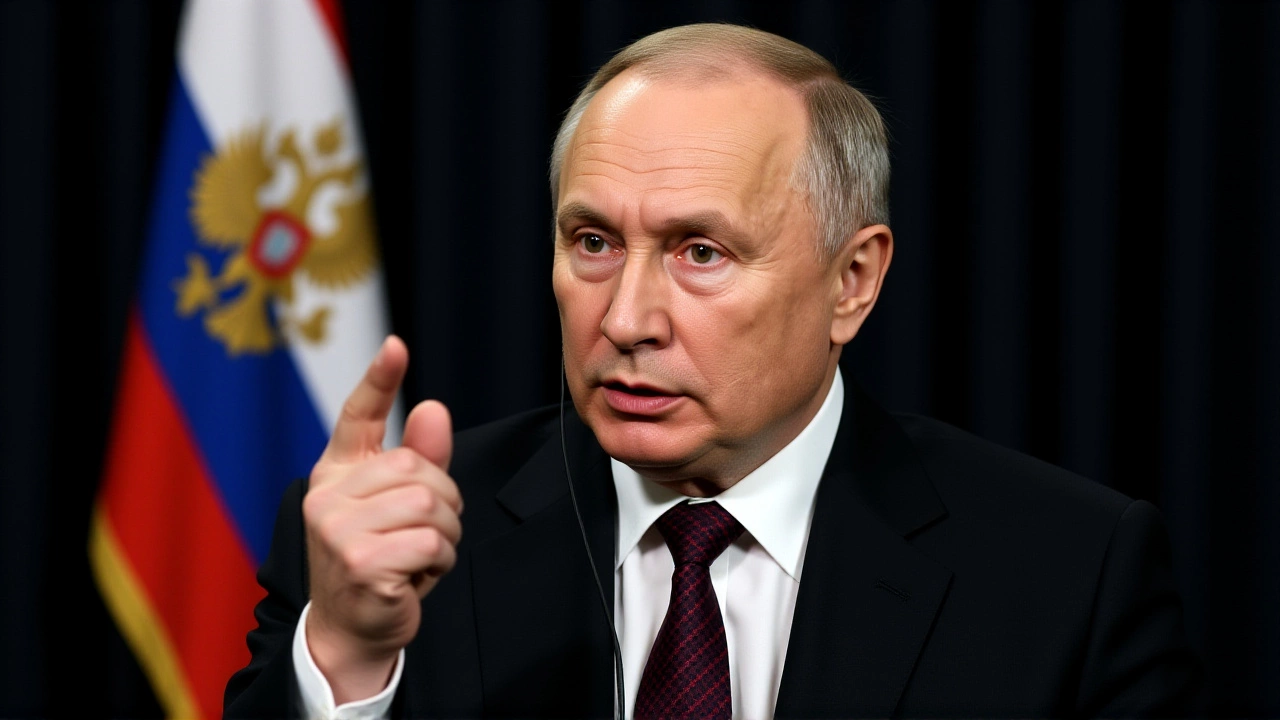When Faisal Islam, economics editor for BBC News, laid out the grim arithmetic of Russia’s war machine in late November 2023, he didn’t mince words: the Kremlin has engineered a temporary lifeline, not a future. Russia’s economy, restructured since February 2022 to prioritize tanks over textbooks and missile parts over pensions, is growing—but it’s growing on fumes. And those fumes won’t last.
The Soviet Echo: 40% of the Budget on War
What’s happening in Moscow today feels like a ghost from the 1980s. Military and security spending now eats up nearly 40% of the federal budget—levels not seen since the final years of the Soviet Union. That’s not just a spike; it’s a systemic realignment. Schools, hospitals, and infrastructure projects have been starved to feed the war machine. The Russian Finance Ministry confirmed in January 2024 that hydrocarbon taxes collected that month surpassed pre-invasion levels from January 2022. On paper, the economy looks strong. In reality, it’s being held together by duct tape and crude oil.
Sanctions? What Sanctions?
Western leaders thought they could choke Russia by cutting off its energy exports. Instead, they created a shadow economy. Hundreds of tankers—dubbed the “shadow fleet”—now crisscross the Indian Ocean and Pacific, rerouting Russian oil to India and China. These ships, often disguised under flags of convenience, avoid Western insurance, banking, and tracking systems. The result? Russia still pumps 9.5 million barrels of oil a day, almost exactly what it did before the invasion. Natural gas and diamond exports have followed the same path. The rouble, which crashed 40% in March 2022, has stabilized. Foreign currency inflows are keeping the state afloat.
But here’s the twist: the West isn’t powerless. It’s just playing a longer game. The U.S. Treasury and European Commission know this isn’t sustainable. They’ve shifted from trying to stop the flow to accelerating the collapse of demand.
The Unproductive Engine
Every tank rolled out of a Russian factory is a dead weight on the economy. Unlike a smartphone or a wind turbine, a missile doesn’t create jobs beyond the factory floor. It doesn’t export services. It doesn’t innovate. It just burns through steel, skilled labor, and state cash. Russia’s industrial base, already aging, is being cannibalized. Factories that once made refrigerators now churn out artillery shells. Engineers who once designed medical equipment now calibrate guidance systems. The human capital drain is invisible on GDP charts—but it’s real.
And it’s accelerating. The Russian labor market is tightening. Young men are conscripted. Skilled workers flee. Wages in defense zones are rising, but productivity is falling. The economy isn’t growing—it’s being forced to grow, like a plant watered with salt.

The Clock Is Ticking
Islam’s warning isn’t about next month. It’s about 2025 and beyond. Global demand for oil and gas is expected to peak in 2024. Saudi Arabia, the U.S., and Brazil are ramping up production. India and China, Russia’s current lifelines, won’t forever pay premium prices for sanctioned crude. When the world’s biggest buyers start looking elsewhere—because it’s cheaper, cleaner, or less risky—Russia will be left with a mountain of oil it can’t sell.
“Expecting collapse by the end of 2024 would be unadvisable,” Islam noted. But expecting stability beyond 2026? That’s fantasy. The Russian state has bought itself time—maybe 18 to 24 months. But time is the one resource it can’t manufacture.
What Comes Next?
The Kremlin knows this. That’s why it’s rushing to lock in long-term contracts with Asia, building new pipelines, and even investing in Arctic infrastructure to prepare for a post-Western energy order. But infrastructure takes years. Markets move faster.
Meanwhile, Ukraine’s allies are quietly preparing for the next phase: sanctions targeting Russia’s financial intermediaries, freezing more assets, and cutting off access to critical tech for its defense industry. The European Union is already drafting rules to ban third-country firms from facilitating Russian oil trades. If those rules stick, the shadow fleet will start sinking—not from torpedoes, but from bureaucracy.

Why This Matters
This isn’t just about Russia. It’s about how sanctions work—or don’t—in the 21st century. The world watched as Iran and North Korea survived decades of isolation. Now we’re seeing Russia try the same playbook. The lesson? Sanctions can delay, not destroy. But they can also reshape global trade patterns permanently. India and China are becoming energy hubs not because they’re ideal partners, but because the West left a vacuum.
For ordinary Russians, the cost is already visible. Inflation is low—but only because state subsidies have been slashed. Real incomes have fallen. Pensioners wait longer for benefits. Doctors leave for Belarus or Kazakhstan. The war economy doesn’t just fight Ukraine—it eats Russia from within.
Frequently Asked Questions
How has Russia managed to keep oil exports stable despite Western sanctions?
Russia bypassed sanctions through a ‘shadow fleet’ of over 500 tankers that use flags of convenience, cash payments, and opaque shipping routes to deliver oil to India and China. These vessels avoid Western insurance and tracking systems, allowing Moscow to maintain production at 9.5 million barrels per day—nearly pre-war levels. Hydrocarbon taxes in January 2024 exceeded those from January 2022, proving the strategy’s short-term success.
Why is military spending at 40% of Russia’s budget a problem?
Sustaining that level of spending drains resources from healthcare, education, and infrastructure—sectors that drive long-term growth. Unlike consumer or tech industries, defense production creates no lasting economic value. It consumes skilled labor, raw materials, and capital without generating exports or innovation, making the economy increasingly unbalanced and vulnerable to shocks.
What role do India and China play in sustaining Russia’s economy?
India and China now absorb over 80% of Russia’s exported oil and much of its gas and diamonds. They pay in local currencies or barter, avoiding Western financial systems. This has stabilized the rouble and funded military production. But their loyalty is transactional—not ideological. As global energy markets shift, both nations are hedging by investing in alternative suppliers, signaling Russia’s dependency is temporary.
Is Russia’s economy truly growing, or is it just being propped up?
Russia’s GDP growth is real in nominal terms—but it’s artificial. It’s driven by wartime production and energy exports, not productivity or innovation. Real wages have declined, brain drain continues, and capital investment in civilian sectors has plummeted. Economists compare it to a patient on life support: vital signs look okay, but the underlying organs are failing.
When could Russia’s war economy start to collapse?
Most analysts, including Faisal Islam, warn that the window for stability closes by late 2025. As global oil demand peaks in 2024 and alternative suppliers ramp up, Russia’s market share will shrink. Combined with tightening sanctions on financial intermediaries and tech imports, the loss of export revenue could trigger a fiscal crisis—especially if the rouble weakens again or domestic unrest grows.
What’s the long-term impact on global energy markets?
Russia’s pivot to Asia has permanently altered global trade flows. The Middle East, Africa, and Latin America are now more integrated into energy supply chains. Western nations are accelerating investments in renewables and LNG infrastructure to reduce dependence on any single supplier. In the long run, Russia’s war has accelerated the energy transition—not slowed it.



